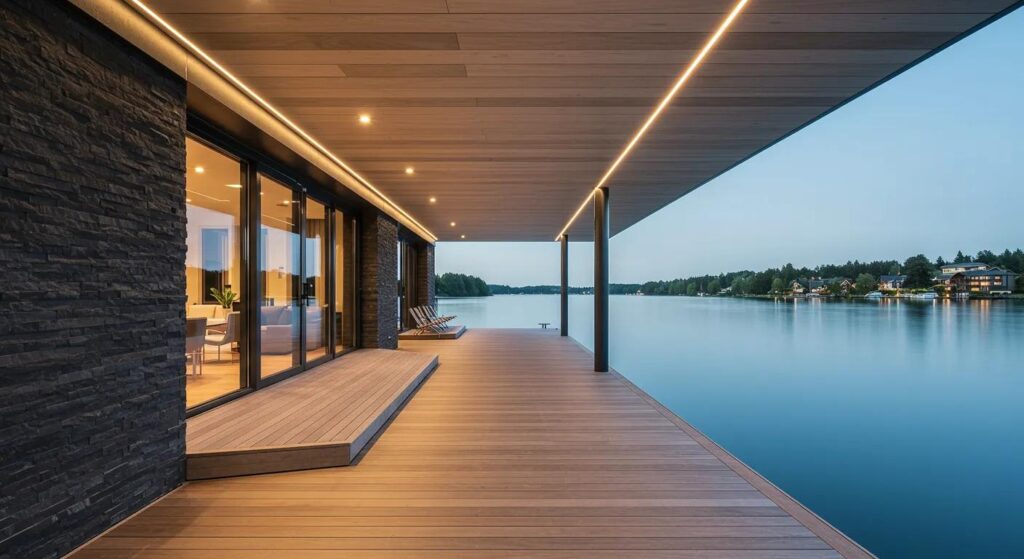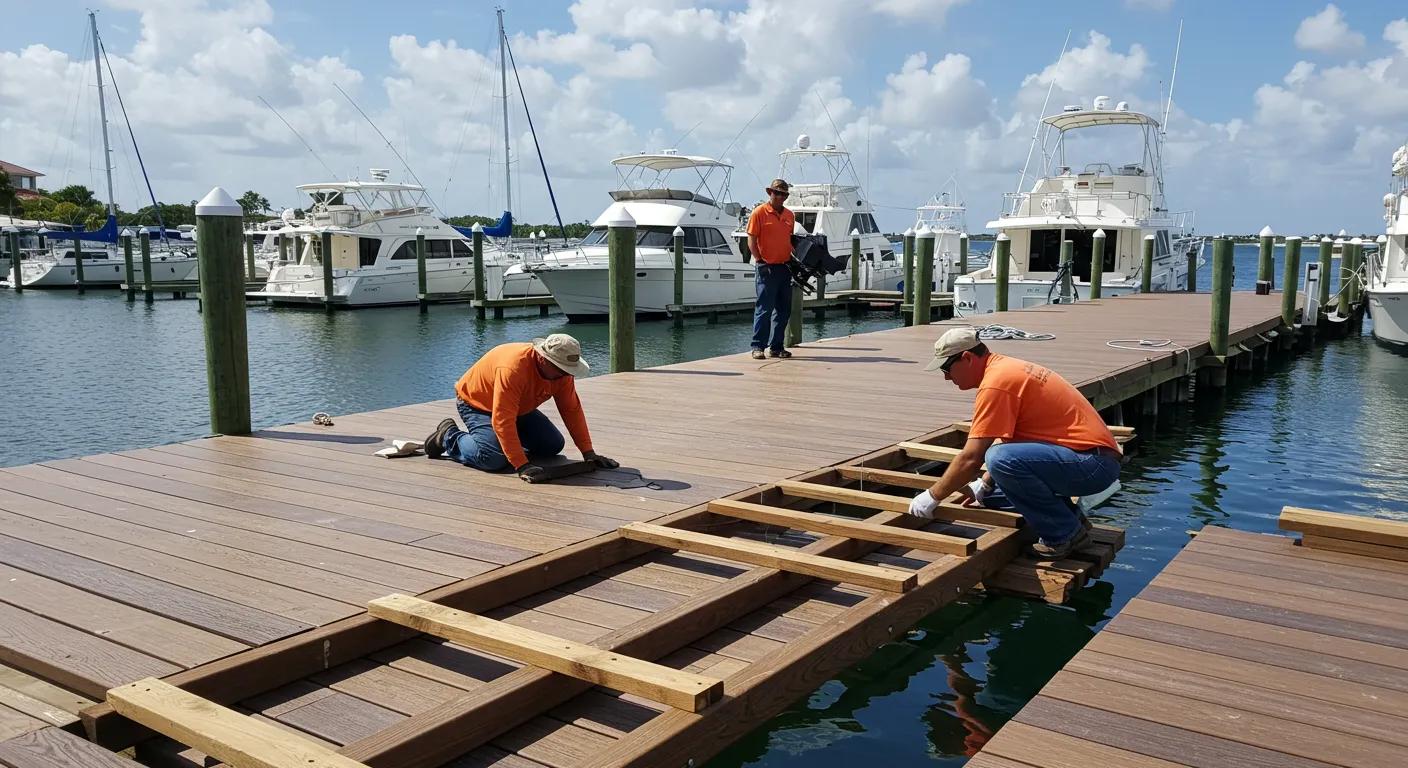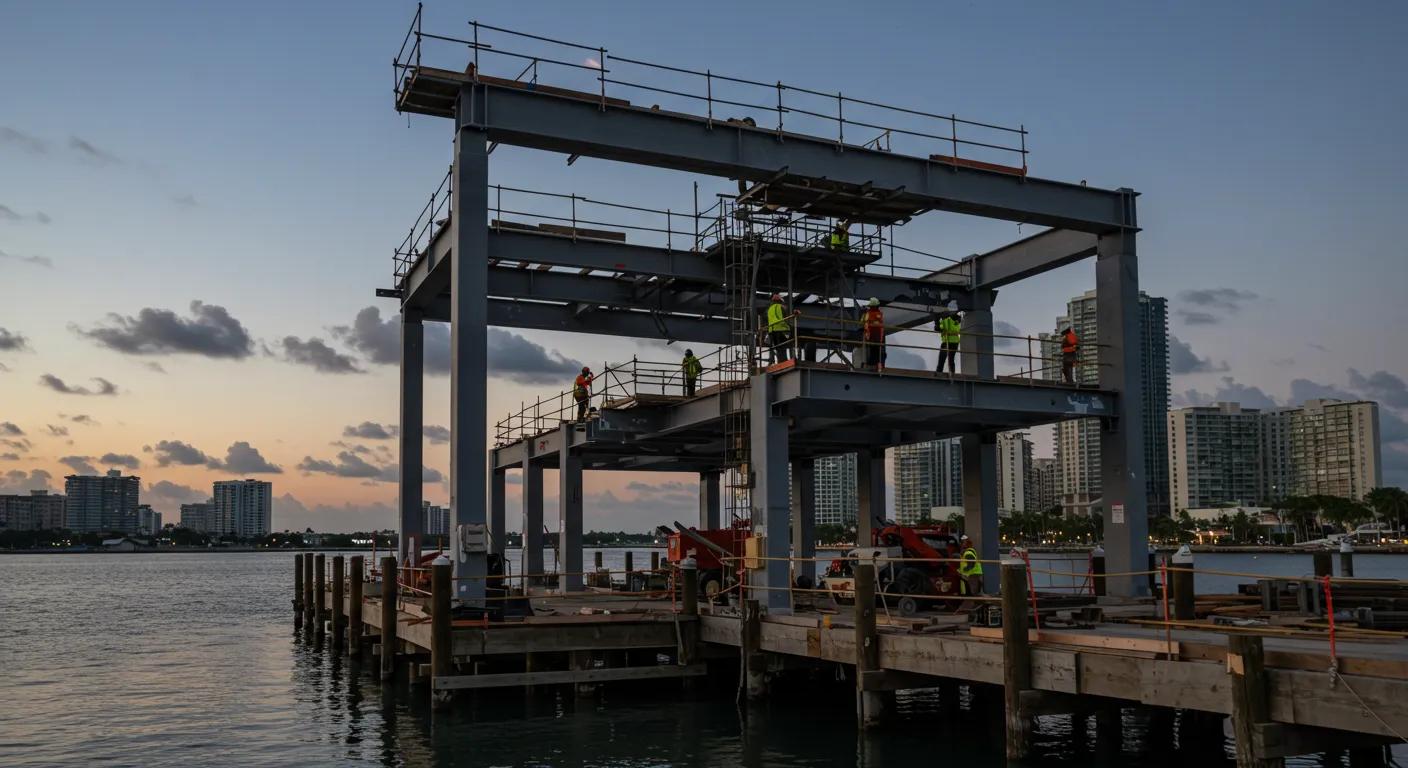Wood vs. Composite Docks: Discovering the Most Cost-Effective Choice for Your Investment
When planning a waterfront project, selecting the ideal dock material is a critical decision that influences both your initial costs and long-term maintenance. As a homeowner looking to enhance the value and functionality of your waterfront property, you need to evaluate factors ranging from installation expenses and upkeep demands to environmental benefits and resale influences. This article offers a detailed analysis of the upfront costs, maintenance requirements, lifespan expectations, resale value effects, and environmental considerations of wood and composite dock options. By comparing these materials through financial, structural, and ecological perspectives, you will be equipped to make an informed decision that supports your lifestyle, withstands the elements, and enhances your property’s appeal.
Transitioning now into a detailed breakdown, the following sections provide insights to ensure your decision is grounded in both financial prudence and practical performance.
Initial Upfront Costs Examining Wood and Composite Dock Options
Understanding initial costs is essential when comparing dock materials. This section explores the purchase prices, installation expenses, and additional fees for both dock construction methods.
Comparing the Purchase Price of Wood Dock Materials
Wood dock materials vary by type. Pressure-treated pine is usually the least expensive option, costing about $10–$15 per square foot, while premium hardwoods such as cedar can range from $20–$30 per square foot. These costs need to be balanced against design goals and expected lifespan.
Assessing the Initial Outlay for Composite Decking Solutions
Composite docks, produced from recycled wood fibers and plastics, typically have a higher upfront cost of $25–$40 per square foot. Although this is more expensive initially, the standardized manufacturing process generally results in stable pricing and long-term value benefits.
Installation Expenses for Wood Dock Construction
Installation for wood docks involves site preparation, labor, and specialized tools to work with natural imperfections. Generally, installation costs run about $20–$30 per square foot, influenced by local labor rates and project complexity.
Installation Expenses for Composite Dock Builds
Composite docks generally require less labor due to their uniformity and ease of handling. Their modular design often leads to installation costs in the same range as wood, around $20–$30 per square foot, with fewer onsite adjustments needed.
Permitting and Initial Design Fees for Dock Projects
Both materials require permits and design consultations to meet local codes and safety standards. These costs can vary from a few hundred to several thousand dollars depending on dock size and regional regulations.
Evaluating Long-Term Maintenance Requirements and Associated Spending for Wood vs Composite Docks

Long-term maintenance significantly influences overall cost effectiveness. This section compares routine upkeep, repair expenses, and maintenance differences between wood and composite docks.
Routine Upkeep Costs for Traditional Wood Docks
Wood docks require regular maintenance to prevent water damage, decay, and insect infestation. Typical upkeep includes biannual inspections, pressure washing, and seasonal cleaning—costs that accumulate over time and demand careful budgeting.
Financial Impact of Staining and Sealing Wood Docks Annually
Annual staining and sealing are essential to protect wood from moisture and UV exposure. These treatments typically cost $1–$2 per square foot per year, adding to the lifetime cost of maintaining a wooden dock.
Repair Expenses Common to Wooden Dock Structures
Exposure to weather, moisture, and physical impacts can cause wood to warp or decay. Occasional repair costs, averaging 5%–10% of the initial investment over the dock’s life, highlight the vulnerabilities of natural materials.
Minimal Maintenance Spending Associated With Composite Docks
Composite docks are engineered for minimal maintenance, resisting moisture absorption, UV degradation, and insect damage. Their upkeep usually involves simple cleaning with mild detergents and occasional inspections, resulting in a lower long-term cost of ownership.
Cleaning and Care for Composite Dock Surfaces to Maintain Value
Due to their smooth surfaces, composite docks are less prone to mold, algae, and debris accumulation. Regular cleaning, using a power wash or a gentle cleaning solution, helps maintain both the dock’s appearance and performance over time.
Lifespan Expectations and Durability Factors Determining Which Dock Construction Method Is More Cost Effective Over the Long Term Wood or Composite
Lifespan and durability are key factors in overall cost effectiveness. This section reviews expected service life, resistance to elements, and warranty benefits for each material.
Projected Service Life of Pressure-Treated Wood Docks
With proper maintenance, pressure-treated wood docks can last between 10 and 20 years. Their lifespan is heavily influenced by exposure to water, sunlight, and the regularity of maintenance such as sealing and repairs.
Expected Longevity of Cedar and Hardwood Dock Materials
Hardwoods like cedar can last from 20 to 30 years with good upkeep. Their natural resistance to decay and insects often justifies the higher initial cost, reducing the need for frequent replacements.
Durability and Resistance of Composite Materials to Elements
Composite docks benefit from an engineered blend of recycled fibers and polymers, which resists moisture, rot, and UV damage. Many composites maintain both structural integrity and aesthetic appeal for over 25 years, reducing repair needs and associated costs.
Impact of Climate and Water Conditions on Dock Material Lifespan
Local climate and water conditions affect both materials. In areas of extreme humidity, saltwater exposure, or severe weather, composites generally perform better due to their robust resistance to moisture and decay, while wood may require more frequent repairs.
Warranty Comparisons Between Wood and Composite Docking
Composite dock products typically come with extended warranties of 20 to 25 years, indicating manufacturer confidence. Wood docks, subject to natural variability and higher maintenance demands, usually receive shorter warranties, influencing long-term security perceptions.
Analyzing the Resale Value and Property Appeal Influenced by Dock Material Choice

The choice of dock material affects not only maintenance and durability but also property resale value and appeal.
How Wood Docks Affect Property Valuation Over Time
A well-designed wooden dock can enhance waterfront property appeal due to its natural aesthetic. However, continuous maintenance and potential visible signs of wear may concern buyers if repairs are neglected.
The Influence of Composite Docks on Home Resale Potential
Composite docks are often seen as a modern, low-maintenance option that enhances home resale potential. Their consistent performance and durability tend to attract buyers looking for long-term solutions with minimal upkeep.
Buyer Preferences Wood Versus Composite Docking
Market trends show a shift toward low-maintenance and environmentally friendly options. While wood remains popular for its natural look, increasing numbers of buyers now prefer the longevity and convenience of composites.
Aesthetic Appeal and Its Contribution to Investment Return
Aesthetic appeal is critical in determining investment return. Wood offers timeless warmth, whereas composites provide a sleek, modern look. A dock that complements the overall design of a property can significantly boost resale value.
Environmental Considerations and Sustainability Profiles of Wood and Composite Docking
Sustainability is increasingly important in construction. This section evaluates the environmental impact of each dock material.
Sourcing and Ecological Impact of Wood Dock Materials
Wood is renewable, and responsibly harvested wood from managed forests can offer a low-carbon footprint. Certifications, such as FSC, ensure sustainable practices, although poor logging practices can harm the environment.
Recycled Content and Manufacturing Processes for Composite Docks
Composite docks incorporate recycled wood fibers and plastics, reducing the need for new raw materials. Their manufacturing processes often focus on waste reduction and energy efficiency, which helps lower their overall environmental footprint.
Chemical Treatments in Wood and Their Environmental Footprint
Wood docks are typically treated with chemicals to extend their service life. Some treatments, like chromated copper arsenate (CCA), have raised environmental concerns due to toxic runoff. Newer, less harmful treatments or naturally resistant woods may help mitigate these risks.
End-of-Life Disposal and Recycling Options for Each Material
When a dock reaches the end of its life, wood can often be repurposed or recycled, though the process can be labor-intensive. Recycling composites, while still developing, offers potential for reclaiming polymer content. Sustainable disposal practices are crucial for both materials.
Choosing an Eco-Conscious Dock Material for Your Investment
Both materials can be eco-friendly when managed responsibly. Using FSC-certified wood or composites with high recycled content can align your investment with sustainability goals while ensuring long-term cost effectiveness.
Determining the Most Cost-Effective Choice for Your Dock Investment Through Comprehensive Analysis

Deciding between wood and composite docks is an integration of all previously discussed factors. This section combines cost, maintenance needs, lifespan, resale value, and environmental impacts into a comprehensive analysis.
Calculating Total Cost of Ownership for Wood Docks
Total ownership costs for wood docks include the initial purchase, installation, recurring maintenance, annual staining and sealing, and periodic repairs. Over a typical 20-year lifecycle, these cumulative expenses can increase the initial investment by 30%–50%.
Calculating Total Cost of Ownership for Composite Docks
Although composite docks have a higher upfront cost, their reduced maintenance requirements and lower repair expenses can result in overall savings. Long-term ownership costs are often lower by up to 40% compared to wood, especially when accounting for extended warranties and consistent performance.
Break-Even Point Analysis Wood vs Composite Dock Investment
A break-even analysis helps determine when the higher initial cost of composites is offset by savings in maintenance and repairs. For many projects, this point is reached within 7–10 years, making composites a more cost-effective option in the long run.
Factoring Personal Use and Enjoyment Into the Investment Equation
Beyond financial metrics, personal use and enjoyment are important. A dock that provides aesthetic pleasure and low-maintenance convenience can enhance your waterfront lifestyle, adding intangible value to your investment.
Making an Informed Decision for Your Waterfront Property
Ultimately, the choice between wood and composite docks depends on balancing upfront costs, long-term expenses, durability, resale benefits, and environmental impact. By carefully considering these factors, you can select the material that best aligns with your budget, sustainability goals, and lifestyle aspirations.
Frequently Asked Questions
Q: How do initial costs differ between wood and composite docks? A: Wood docks generally have lower purchase prices but require frequent maintenance. Composite docks have higher upfront costs but lower maintenance and repair expenses, making them more cost-effective over time.
Q: What maintenance tasks are regularly required for wooden docks? A: Wooden docks need routine cleaning, biannual inspections, annual staining and sealing, and occasional repairs or replacements due to wear, rot, or insect damage.
Q: Can composite docks withstand harsh weather conditions better than wood? A: Yes, composite docks are engineered to resist moisture, UV degradation, and insect damage. Their performance in extreme weather usually results in fewer repairs and lower maintenance costs compared to wood.
Q: How does the durability of wood compare to composite materials? A: While high-quality hardwoods can last 10–30 years with regular care, composite docks often exceed 25 years in durability, making them a superior long-term investment with minimal maintenance.
Q: Are there environmental benefits in choosing composite docks over wood? A: Composite docks use recycled materials and reduce the need for chemical treatments, offering a more sustainable option. However, sustainably sourced wood can also be eco-friendly when managed responsibly.
Q: Is it possible to retrofit an existing wooden dock with composite materials? A: Retrofitting can be challenging, but some composite components may be integrated during repairs or upgrades to combine the aesthetics of wood with the durability of composites.
Q: How do warranties compare between wood and composite dock products? A: Composite docks typically come with extended warranties of 20–25 years, while wood docks usually have shorter warranties due to natural variability and higher maintenance needs.
Final Thoughts
Your dock investment decision rests on a thorough evaluation of upfront costs, long-term maintenance, durability, and resale value. Wood offers a traditional aesthetic and lower initial expenses, while composite provides enhanced durability, low maintenance, and environmental benefits. By integrating detailed cost analyses with your lifestyle and sustainability goals, you can confidently choose the option that delivers the best overall value for your waterfront property.




